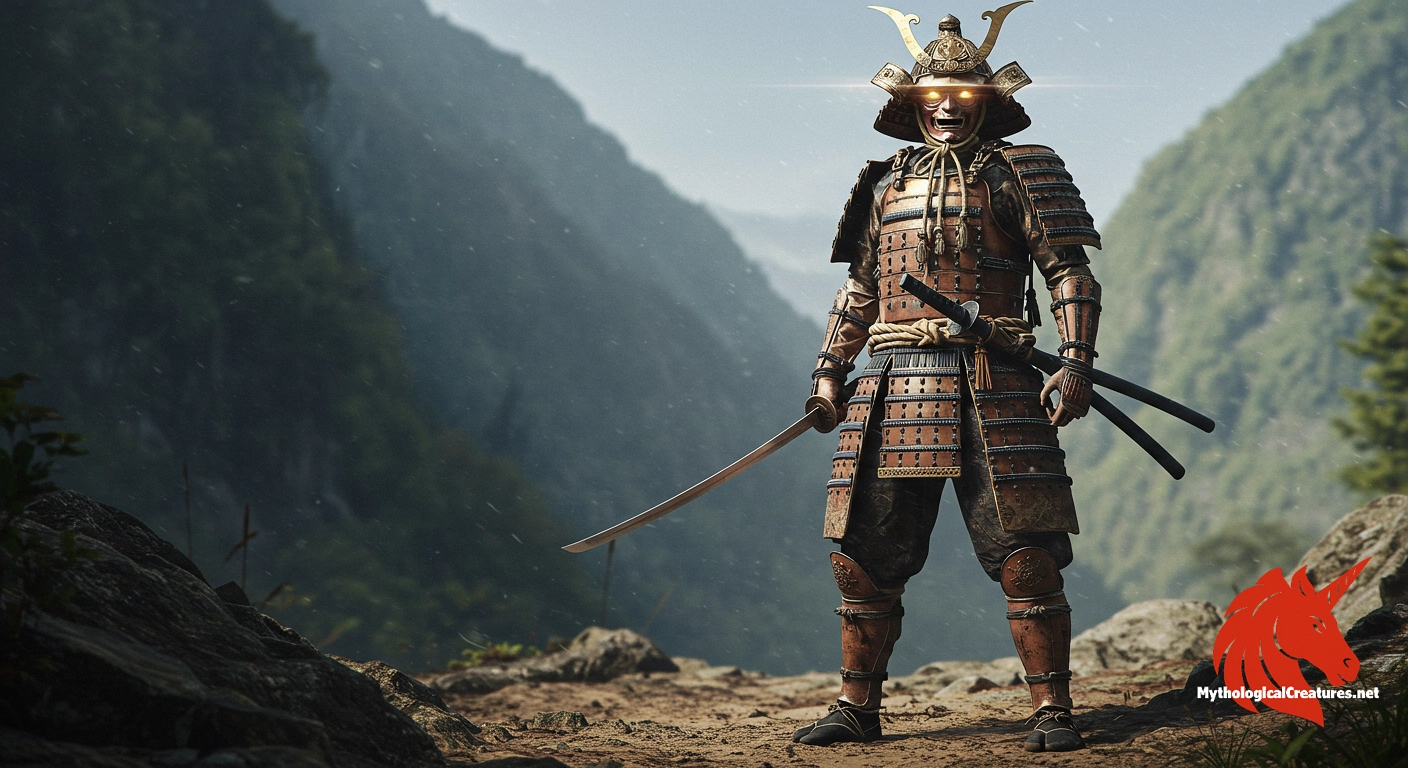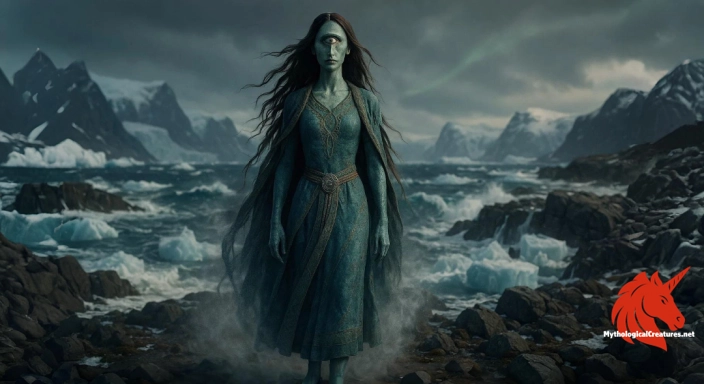Minamoto no Yoshiie: Minamoto no Yoshiie was a legendary Minamoto clan samurai renowned for his valor and martial prowess during the late Heian period in Japan.

Minamoto no Yoshiie
Minamoto no Yoshiie - Minamoto no Yoshiie's exploits in battle and his subsequent elevation to kami status have cemented his status as a symbol of valor and divine protection in Japanese history and mythology.
Origins & First Encounters
Minamoto no Yoshiie was a towering figure whose life bridged the tangible realities of the late Heian period and the ethereal realms of legend. Born in 1039 into the storied Minamoto clan, he quickly distinguished himself on Japan’s battlefields with both incisive strategy and formidable bravery. His early military successes in conflicts such as the Zenkunen War and Gosannen War earned him the title of the Most Valorous Warrior in the Land. As the first son of Minamoto no Yoriyoshi, he inherited a legacy of martial tradition that was further refined under the tutelage of masters like Oe no Masafusa. His career was marked by a seamless blend of personal prowess and the disciplined ethos of the samurai, setting perennial standards for his successors. With time, accounts of his exploits merged with the divine, and legends began to present him as an avatar of Hachiman, the revered Shinto god of war. His transformation from a celebrated mortal warrior into a deified protector underscores the deep interconnection between history and myth in Japanese culture. Beyond his battlefield achievements, Yoshiie’s life became a symbol of loyalty, heroic sacrifice, and the indomitable spirit of the warrior class.
His enduring influence is witnessed in both the martial records of his time and in the annual remembrances held at shrines, where his legacy continues to inspire reverence and respect.
Source Texts & Tale Variants
The chronicles recounting Minamoto no Yoshiie’s deeds are as multifaceted as the man himself, weaving together threads from military records, genealogical texts, and oral lore. Early texts from court chronicles and war registers detail his tactical acumen in the Zenkunen and Gosannen wars, offering a foundational narrative grounded in history. Numerous primary sources, including later compilations that celebrated samurai virtues, contribute to a composite portrait of his character and exploits. Several manuscripts preserve variations in the recounting of his achievements, with some emphasising a divine connection to Hachiman while others focus on his skills as a warrior. In certain records, the influence of his mentor Oe no Masafusa is highlighted, stressing the rigorous training he received that helped shape his destiny. Folkloric accounts, passed down through generations, often blend the verifiable with the miraculous, creating a narrative that is both inspiring and enigmatic. The diversity in these sources is further manifested by regional oral traditions that adjust his deeds to suit local cultural sensibilities. Even as official historical texts strive for uniformity, the legendary embellishments found in temple lore and shrine inscriptions expand on his narrative, offering a rich tapestry of story variants that continue to captivate audiences.
This multiplicity of sources testifies to the profound impact Yoshiie had on both historical and cultural memory, ensuring that his story remains layered and enduring.
Form & Powers
Although precise contemporary descriptions of Minamoto no Yoshiie’s appearance are scarce, traditional portrayals have long depicted him as exuding both martial vigour and dignified nobility. He is often imagined as having a steely gaze that mirrored the intensity of his battlefield experience and a countenance marked by calm determination. Artistic renditions, whether in classic scrolls or shrine carvings, suggest a lean but robust figure whose physical presence commanded respect. His attire, typically represented through finely crafted armour and an elaborately decorated helmet, symbolised his high standing while remaining practical for combat. Subtle facial features, combined with a disciplined posture, enhanced his aura as both a warrior and a leader of men. Many visual depictions accentuate his flowing hair and the ritualistic adornments in his gear, hinting at an almost sacred quality in his martial presentation. The careful balance between elegance and strength in these illustrations has contributed to a visual archetype that celebrates the ideal samurai. Such portrayals have not only informed how successive generations visualise him but have also contributed to an enduring image that merges historical fact with legendary embellishment. Even in the absence of contemporary portraits, the layered descriptions from later sources render a figure whose appearance is as formidable as his deeds.
Regional Faces
Regional interpretations of Minamoto no Yoshiie vary significantly, reflecting the localized interplay between historical fact and mythic embellishment. In the northern provinces, where many of his battles unfolded, his exploits are remembered as pivotal moments that helped shape regional identities and communal resilience. Local shrines dedicated to him in these areas nurture a narrative that emphasises both his martial achievements and his divine lineage as an avatar of Hachiman. In central Japan, his legacy is often interwoven with the broader cultural narrative of the samurai spirit, celebrated in rituals that highlight loyalty, bravery, and honour. Rural communities tend to view him as a guardian deity, whose intervention in times of strife has been mythologised in local festivals and oral traditions. Urban centres, meanwhile, have adopted the legend of Yoshiie into modern reinterpretations, blending historical records with artistic licence in theatre and literature. These regional variations reflect diverse cultural priorities, with some areas focusing on the strategic genius of his military campaigns and others venerating his transformation into a kami. The localized commemorations demonstrate how Yoshiie’s image has been tailored to serve as a symbol of protection and identity across different parts of Japan.
Through this regional mosaic, one can discern the multifaceted legacy of a warrior whose life transcended the limits of time and geography.
Cultural Parallels
Minamoto no Yoshiie’s legendary status invites comparisons with other heroic figures whose lives straddle the boundary between mortal achievement and divine exaltation. His deification as Hachimantaro finds a parallel in other cultures where exemplary warriors, such as the Chinese Guan Yu, were immortalised as both historical figures and spiritual guardians. Like many celebrated heroes who have been elevated to cult status, Yoshiie’s narrative blends meticulously recorded military exploits with mystical elements that defy simple explanation. His portrayal resonates with themes found in the comparative studies of mythic archetypes, where the journey from mortal to divine is a testament to exceptional virtue and sacrifice. Across various Japanese legends, his character intersects with broader notions of honour, much like later samurai ideals embodied by figures such as Kusunoki Masashige. The duality of his existence—grounded in battlefield reality while also occupying a realm of sacred myth—mirrors a common motif in warrior cultures around the world. In this light, Yoshiie can be viewed as a prototype of the hero whose life is celebrated not only for its tangible victories but also for its capacity to inspire spiritual reverence. These comparisons serve to highlight the universality of the warrior myth, where human endeavours are transcended by legendary status. His enduring legacy thus stands as a bridge between the narrative traditions of Japanese history and the broader global context of heroic mythology.
By examining these cultural parallels, one gains insight into how myths are both born from and used to enhance the factual records of extraordinary lives.
Legacy & Modern Evolution
The evolution of Minamoto no Yoshiie’s image from a formidable Heian period warrior to a deified symbol of martial excellence illustrates a profound transformation in the cultural memory of Japan. Over the centuries, detailed military chronicles were complemented by vibrant folklore, with later generations embellishing his deeds with elements of divine intervention and supernatural prowess. During the medieval era, poetic retellings and temple legends amplified his stature, blending the historical with the mystical, and establishing him as a patron figure of the samurai spirit. Modern reinterpretations further build on this layered legacy, as literature, cinema, and even video games continue to explore the archetypal qualities of his character. His elevation to the status of a kami at various shrines underlines the enduring appeal of his narrative in both religious and popular contexts. Contemporary martial and cultural historians often cite Yoshiie as an embodiment of the quintessential bushido ethos, representing not only battlefield heroics but also steadfast loyalty and honour. His legacy endures in annual festivals, traditional commemorations, and artistic renditions that celebrate the timeless virtues of courage and sacrifice. As the boundaries between myth and history blur, his story continues to bridge Japan’s past with its modern cultural identity, inspiring new generations to reflect on the ideals of leadership and perseverance.
This timeless evolution from a celebrated warrior to a deified emblem has ensured that Minamoto no Yoshiie remains an iconic figure in the collective imagination of Japan.
Interesting Fact
An enduring aspect of his legacy is how his real historical achievements seamlessly merge with mythological elements, blurring the lines between mortal valor and divine influence.
Quick Creature Info
Associations:
Our Mythic Legendary Rating:

Also Sometimes Known As:
Habitat:
Supernatural Powers:
Physical Attributes:
Abilities:
Behavior:
Lore:
Related Creatures, Tales or Lore
- MMinamoto no Yoshitsune
- HHachiman
- BBenkei
References
Discover Another Mythical Legend You May Not Have Heard Of?
Uncover the mysteries of ancient folklore and expand your knowledge of legendary beings from cultures around the world.
Dare to Meet the Idliragijenget....
Mythical Disclaimer: The images and data on this site are derived from various historical and literary sources, but we have found that many myths often have multiple versions and interpretations across references, sometimes contradictory. As a result, these creature depictions are artistic interpretations—imaginative blends of folklore, legend, and a dash of AI guesswork. Because creature descriptions vary widely, our illustrations and accompanying information represent our best effort to honor mythology while bridging creative gaps. Enjoy these interpretations—just remember, we've done our best to respect the stories and validate available data, but in the realm of mythology, details often shift, imagination leads the way, and nothing is ever set in stone!
Curated by the Mythological Creatures Team (rev. May 2025)
